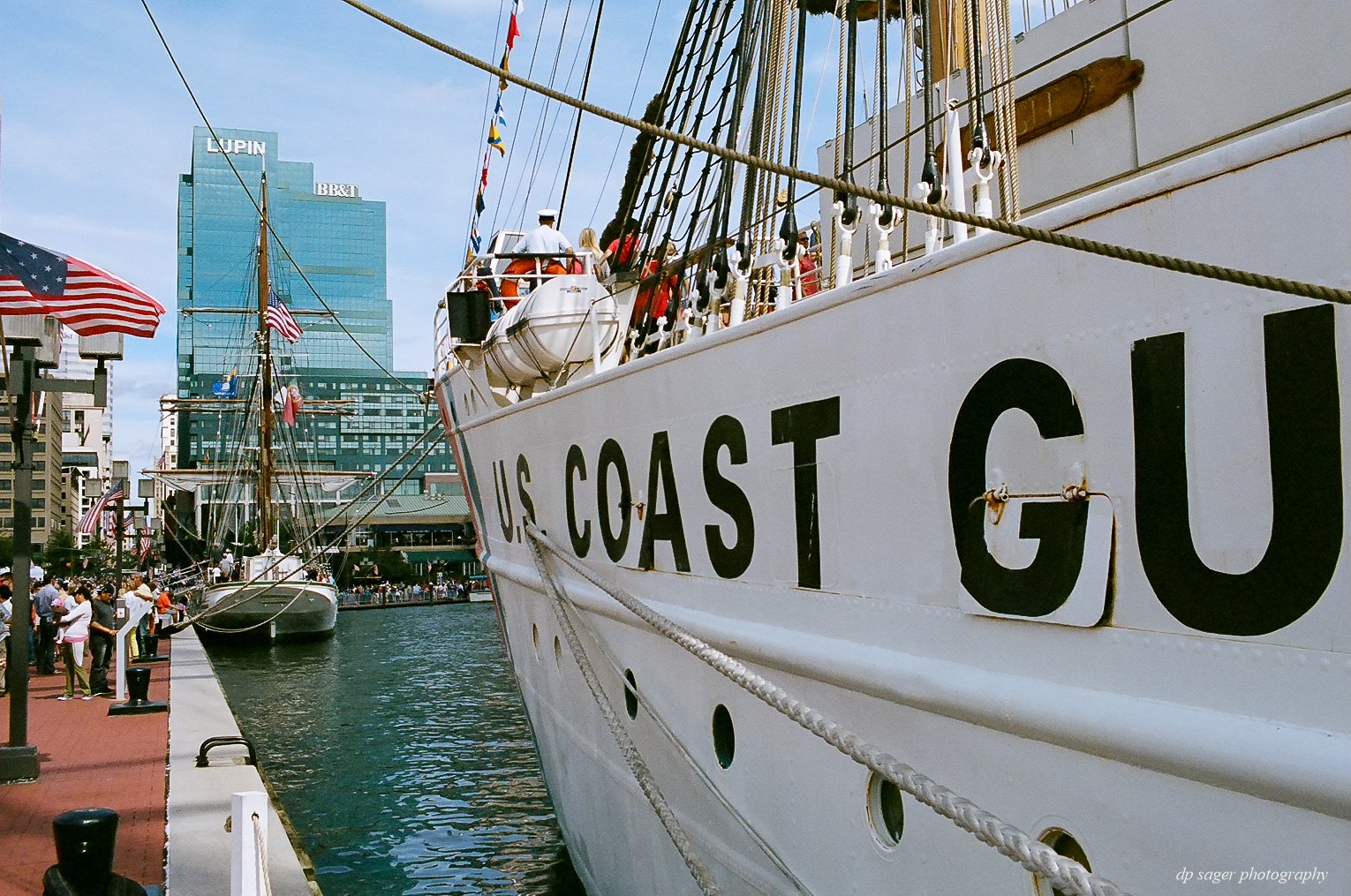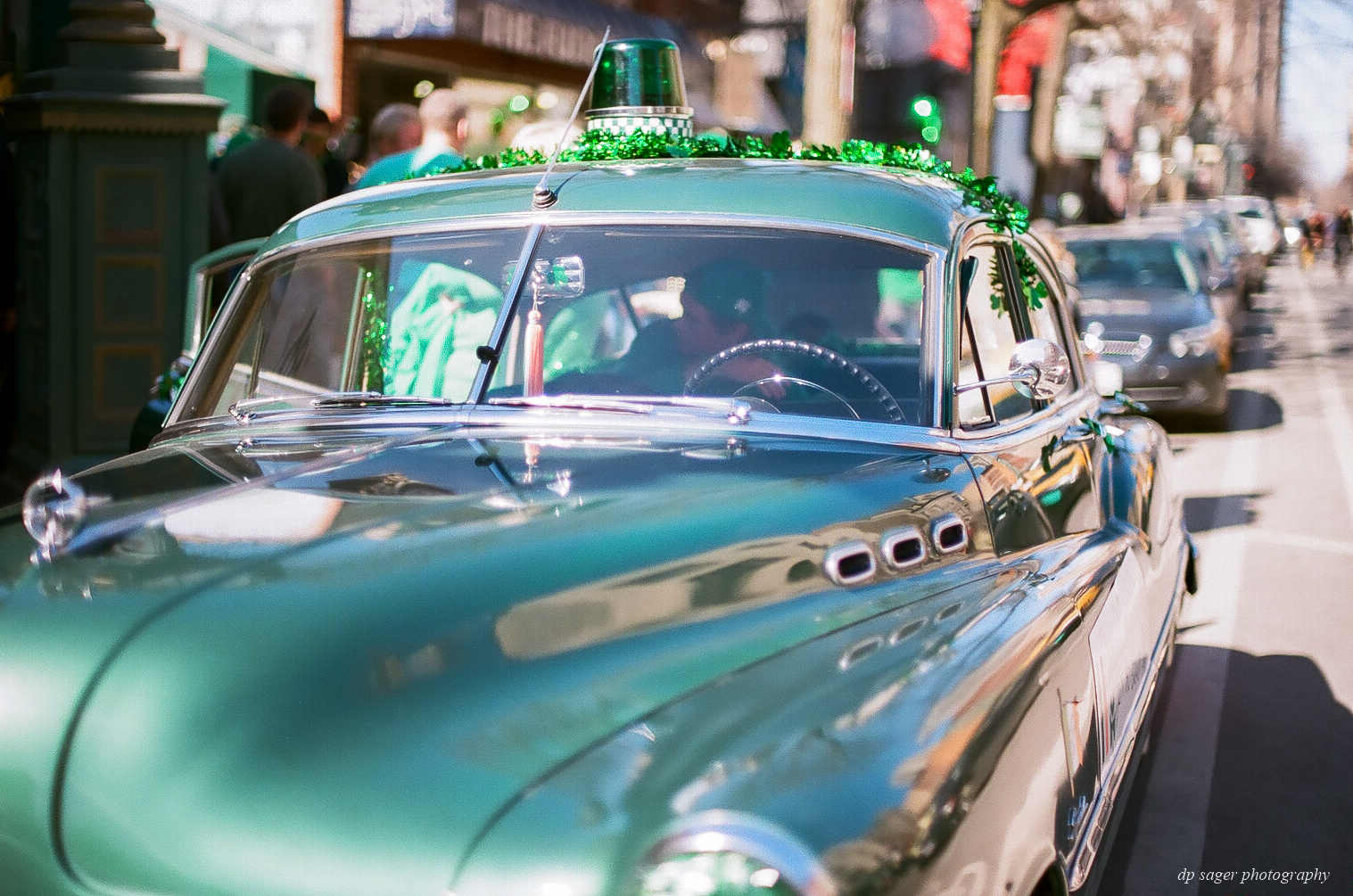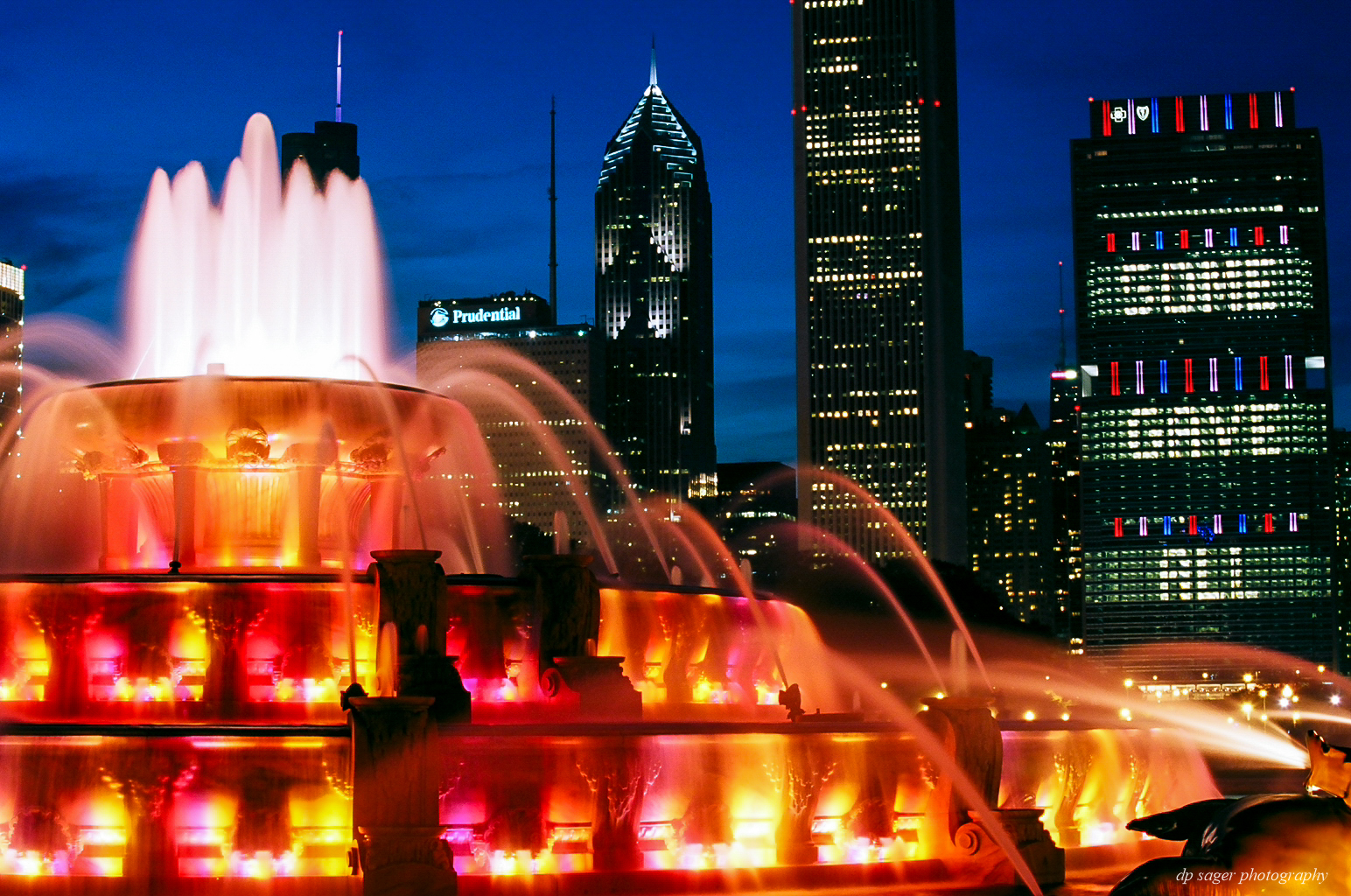Comparing film to digital - part II
Feb 13, 2019 09:06:38 #
Film can be purchased from a variety of sources. I've used Amazon, local camera stores, KEH and B&H. I've also purchased expired film from members here at UHH, those advertised as being from long-term freezer storage. I've found my preferred films are those types with fine-grain and for color films, those with more saturated colors. Below is a small survey of images from different film types, using a variety of manual and auto focus lenses and camera bodies.
Photographic film is a strip or sheet of transparent plastic film base coated on one side with a gelatin emulsion containing microscopically small light-sensitive silver halide crystals. The sizes and other characteristics of the crystals determine the sensitivity, contrast and resolution of the film. The emulsion reacts when exposed to light. The very short exposure of the film to the image formed by a camera lens is used to produce only a very slight chemical change, proportional to the amount of light absorbed by each crystal. This creates an invisible latent image in the emulsion, which can be chemically developed into a visible photograph.
For the images below, the development and scanning of the negatives was performed by mail order houses The Darkroom and North Coast Photography Services (NCPS). The Darkroom provides three scanning options for pixel resolution. The NCPS provides a higher resolution scan than available from The Darkroom. The JPEG files were loaded to Adobe Lightroom and processed further, including the addition of EXIF data identifying the camera, lens and exposure information, where available.
US Coast Guard Cutter Eagle
Baltimore, MD
September 2014
Body - Canon EOS 1v
Lens - EF 35mm f/1.4L USM
Film - Kodak Portra 400
USCGC Eagle

In black-and-white photographic film, there is usually one layer of silver halide crystals. When the exposed silver halide grains are developed, the silver halide crystals are converted to metallic silver, which blocks light and appears as the black part of the film negative. Color film has at least three sensitive layers, incorporating different combinations of sensitizing dyes.
St. Patrick's Day
Chicago, IL
March 2015
Body - Canon F-1 new
Lens - FD 50mm f/1.2L
Film - Kodak Portra 160
St Paddy's on film

Experiments with color photography began almost as early as photography itself, but the three-color principle underlying all practical processes was not set forth until 1855, not demonstrated until 1861, and not generally accepted as "real" color photography until the process became commercially viable in the early 20th century.
Arches National Park
Moab, UT
December 2015
Body - Canon EOS 1v
Lens - EF 35mm f/1.4L USM
Film - Kodak Portra 160VC
Double Arch

"Color film" in the modern sense of a multi-layered emulsion was born with the introduction of Kodachrome for home movies in 1935 and as 35mm film for still cameras in 1936. During the next several decades, color film remained much more expensive than black-and-white and required much more light, factors which combined to delay its widespread adoption. Decreasing cost and increasing sensitivity gradually overcame these impediments. By the 1970s, color film predominated in the consumer market, while the use of black-and-white film was increasingly confined to photojournalism and fine art photography.
Buckingham Fountain
Chicago, IL
June 2014
Body - Canon EOS 1v
Lens - EF 17-40mm f/4L USM
Film - Kodak Ektar 100
Some Gave All

In order to produce a usable image, the film needs to be exposed properly. The amount of exposure variation that a given film can tolerate, while still producing an acceptable level of quality, is called its exposure latitude. Color print film generally has greater exposure latitude than other types of film. Additionally, because print film must be printed to be viewed, after-the-fact corrections for imperfect exposure are possible during the printing process.
Old Car City
White, GA
November 2017
Body - Canon EOS 1v
Lens - EF 135mm f/2L USM
Film - Fuji Superia 100
Old Car City

The images are sized to fill your wide-screen display. Try using <F11> to maximize your browser window for the full effect. If the images overshoot your display, such as a laptop, just click on the image or the URL link and they'll resize to your screen from the host Flickr site. You can click a bit further into the image details on the Flickr page, if desired. EXIF data is available from the host Flickr pages as well. On the Flickr site, use your <L>key for Large and the <F11> for the full-screen.
If the images are not filling your widescreen display due to recent UHH changes, follow this link and update your UHH profile: https://www.uglyhedgehog.com/t-572300-1.html
Photographic film is a strip or sheet of transparent plastic film base coated on one side with a gelatin emulsion containing microscopically small light-sensitive silver halide crystals. The sizes and other characteristics of the crystals determine the sensitivity, contrast and resolution of the film. The emulsion reacts when exposed to light. The very short exposure of the film to the image formed by a camera lens is used to produce only a very slight chemical change, proportional to the amount of light absorbed by each crystal. This creates an invisible latent image in the emulsion, which can be chemically developed into a visible photograph.
For the images below, the development and scanning of the negatives was performed by mail order houses The Darkroom and North Coast Photography Services (NCPS). The Darkroom provides three scanning options for pixel resolution. The NCPS provides a higher resolution scan than available from The Darkroom. The JPEG files were loaded to Adobe Lightroom and processed further, including the addition of EXIF data identifying the camera, lens and exposure information, where available.
US Coast Guard Cutter Eagle
Baltimore, MD
September 2014
Body - Canon EOS 1v
Lens - EF 35mm f/1.4L USM
Film - Kodak Portra 400
USCGC Eagle

In black-and-white photographic film, there is usually one layer of silver halide crystals. When the exposed silver halide grains are developed, the silver halide crystals are converted to metallic silver, which blocks light and appears as the black part of the film negative. Color film has at least three sensitive layers, incorporating different combinations of sensitizing dyes.
St. Patrick's Day
Chicago, IL
March 2015
Body - Canon F-1 new
Lens - FD 50mm f/1.2L
Film - Kodak Portra 160
St Paddy's on film

Experiments with color photography began almost as early as photography itself, but the three-color principle underlying all practical processes was not set forth until 1855, not demonstrated until 1861, and not generally accepted as "real" color photography until the process became commercially viable in the early 20th century.
Arches National Park
Moab, UT
December 2015
Body - Canon EOS 1v
Lens - EF 35mm f/1.4L USM
Film - Kodak Portra 160VC
Double Arch

"Color film" in the modern sense of a multi-layered emulsion was born with the introduction of Kodachrome for home movies in 1935 and as 35mm film for still cameras in 1936. During the next several decades, color film remained much more expensive than black-and-white and required much more light, factors which combined to delay its widespread adoption. Decreasing cost and increasing sensitivity gradually overcame these impediments. By the 1970s, color film predominated in the consumer market, while the use of black-and-white film was increasingly confined to photojournalism and fine art photography.
Buckingham Fountain
Chicago, IL
June 2014
Body - Canon EOS 1v
Lens - EF 17-40mm f/4L USM
Film - Kodak Ektar 100
Some Gave All

In order to produce a usable image, the film needs to be exposed properly. The amount of exposure variation that a given film can tolerate, while still producing an acceptable level of quality, is called its exposure latitude. Color print film generally has greater exposure latitude than other types of film. Additionally, because print film must be printed to be viewed, after-the-fact corrections for imperfect exposure are possible during the printing process.
Old Car City
White, GA
November 2017
Body - Canon EOS 1v
Lens - EF 135mm f/2L USM
Film - Fuji Superia 100
Old Car City

The images are sized to fill your wide-screen display. Try using <F11> to maximize your browser window for the full effect. If the images overshoot your display, such as a laptop, just click on the image or the URL link and they'll resize to your screen from the host Flickr site. You can click a bit further into the image details on the Flickr page, if desired. EXIF data is available from the host Flickr pages as well. On the Flickr site, use your <L>key for Large and the <F11> for the full-screen.
If the images are not filling your widescreen display due to recent UHH changes, follow this link and update your UHH profile: https://www.uglyhedgehog.com/t-572300-1.html
Feb 13, 2019 09:27:15 #
Interesting & informative post ... like many of yours that I've read. Not sure that I'm going back to film but I tip my hat to those that continue using film.
Feb 13, 2019 09:30:01 #
Feb 13, 2019 13:43:15 #
jederick wrote:
Thank You very much for sharing...every image is a stunner!! 



Thank you jederick! These are very much a cherry picking of some of the better results. The disappointment of an entire roll with one or two (or nothing) good has caused me to reconsider film altogether more than once. But, with some more research and practice and even more careful consideration, I've come back again more than once to try it again. Getting comfortable to the point that I think I've found my style of shooting film has helped in the confidence area and in the results.
Feb 13, 2019 14:11:20 #
fbeaston wrote:
Interesting & informative post ... like many of yours that I've read. Not sure that I'm going back to film but I tip my hat to those that continue using film.
Thank you fbeaston! I have so much more respect for the successful film photographers of yore when I consider having to do it without auto focus and EXIF data capture and the collective knowledge of the internet.
Feb 14, 2019 10:31:48 #
CHG_CANON wrote:
Thank you jederick! These are very much a cherry picking of some of the better results. The disappointment of an entire roll with one or two (or nothing) good has caused me to reconsider film altogether more than once. But, with some more research and practice and even more careful consideration, I've come back again more than once to try it again. Getting comfortable to the point that I think I've found my style of shooting film has helped in the confidence area and in the results.
Glad to hear you're giving film another go...you are very accomplished in photography and as Ansel said "12 good photos in a year" or something similar!!


Feb 14, 2019 10:34:14 #
jederick wrote:
Glad to hear you're giving film another go...you are very accomplished in photography and as Ansel said "12 good photos in a year" or something similar!!



As well as your first 10,000 photographs are your worst ... imagine buying, shooting and developing all that wasted film.

Feb 14, 2019 10:37:13 #
Very nice images. The coast guard cutter was a knockout, almost 3d. Thanks for sharing.
-elbe
-elbe
Feb 14, 2019 10:38:33 #
CHG_CANON wrote:
As well as your first 10,000 photographs are your worst ... imagine buying, shooting and developing all that wasted film. 

It's only wasted if you didn't learn something from it.
Feb 14, 2019 11:47:56 #
Always enjoy your presentations. Encourages me to give extra effort. I use digital today but pull out my film camera occasionally to experiment and compare with no huge purpose. However, I am always amazed at how great the results are from my Canon AE-1 Program purchased new in mid 1980s. The beauty of that piece of equipment is the excellent results obtained on the auto setting; even in difficult lighting situations it seems to deliver on almost all occasions. Thank you for the film updates and instructional guidance.
Feb 14, 2019 12:15:32 #
Feb 14, 2019 16:14:53 #
Hawkowl
Loc: Ithaca, NY
I'm enjoying your film series--thanks for doing that. I appreciate the details too. The Coast Guard and the fountain pics are just stunning! You sure know how to expose that film! Although I have a digital camera, I used an OM-1 for many years (just an enthusiast), so my brain got used to the process, and I actually enjoy using film cameras more than digital. I've bought several additional vintage film cameras in the past couple years, and I can't wait to really start using them. I don't need instant gratification, so I don't mind the wait. I actually like knowing that I have to take X number of additional shots before I can send it in to be a motivating factor to get myself out there shooting! There is the cost of developing, but I rationalize that by telling myself I saved thousands of dollars on the cost of the cameras. Plus you can get digital outputs from the developing as well, so I still get to have fun with some post-processing, albeit not RAW. I've also found great joy in seeing the stunned and amazed reactions of little children when they can't see the instant result, and hear that it might be two or three months (a lifetime, to them) before we get to see the pictures! That just doesn't "compute" for them. And flashbulbs, oh my! Those fascinate them to no end. They love it when I show up with these magical things. Makes me also want to track down some Mexican jumping beans, bullroarers, fizzies, boomerangs, cap guns and the like, that made growing up in the 1950s special. Anyway, thanks again for your posts!
Feb 14, 2019 17:07:53 #
Hawkowl wrote:
I'm enjoying your film series--thanks for doing th... (show quote)
Thank you Hawkowl! The images from the EOS 1v across these few posts tend to be from Program exposure mode where I've learned to defer to the camera's decisions on focus point selection, aperture and shutterspeed. I'll override, typically the aperture or the point of focus, but I've learned a lot by considering the automated selections this camera will make and learning from these decisions.
Where I take a more active role with this film body is the amount of exposure compensation. I've purchased expired film and found suggestions to add up to +1 stop of EC when using expired film, depending on the situation and type of film. I've also been using colored filters with B&W film where some dark red filters require +3 stops EC. Making these changes for EC have really made a difference in the results. The approach with the 1v is different from the 5DIII DSLR where I shoot the digital body entirely in manual & RAW, including almost always positioning the single point of focus.
I find myself trying to chimp on the film camera, to a chuckle most every time. Regarding the image of Buckingham Fountain, I'm pretty sure that evening I was out with both film and digital. I've done some long exposures, both at night and early morning along the lake, testing the meters against each other as well as using the duration on the DSLR in bulb to give me a time-value for bulb on the film camera. These were interesting experiments, but as I mentioned in one of these threads, these side by side shots lead to the same images in both formats where I don't need two versions of the same thing, particularly if neither is any good.
Glad you've enjoyed the presentation and I look forward to your results.
Feb 14, 2019 17:10:19 #
regularguy55 wrote:
Always enjoy your presentations. Encourages me to... (show quote)
Thank you regularguy55! The AE-1 came with a 50mm lens, that after a roll or two, seemed too limiting. Next, I tried an FD zoom lens and found the shooting process of both zoom and focus to be too cumbersome. That experience sent me to find FD primes at other lengths. I'd say everything from my AE-1 were well exposed, where the out of focus or too slow shutter / camera shake were the typical problems rather than anything to do with exposure. I like the size of the AE-1 too. Glad you've enjoyed the presentation and I look forward to your results.
Feb 14, 2019 17:10:40 #
Thank you Scotty, Elbe, jederick, fbeaston, Earnest! Glad you've enjoyed these images and the ideas on film.
If you want to reply, then register here. Registration is free and your account is created instantly, so you can post right away.





